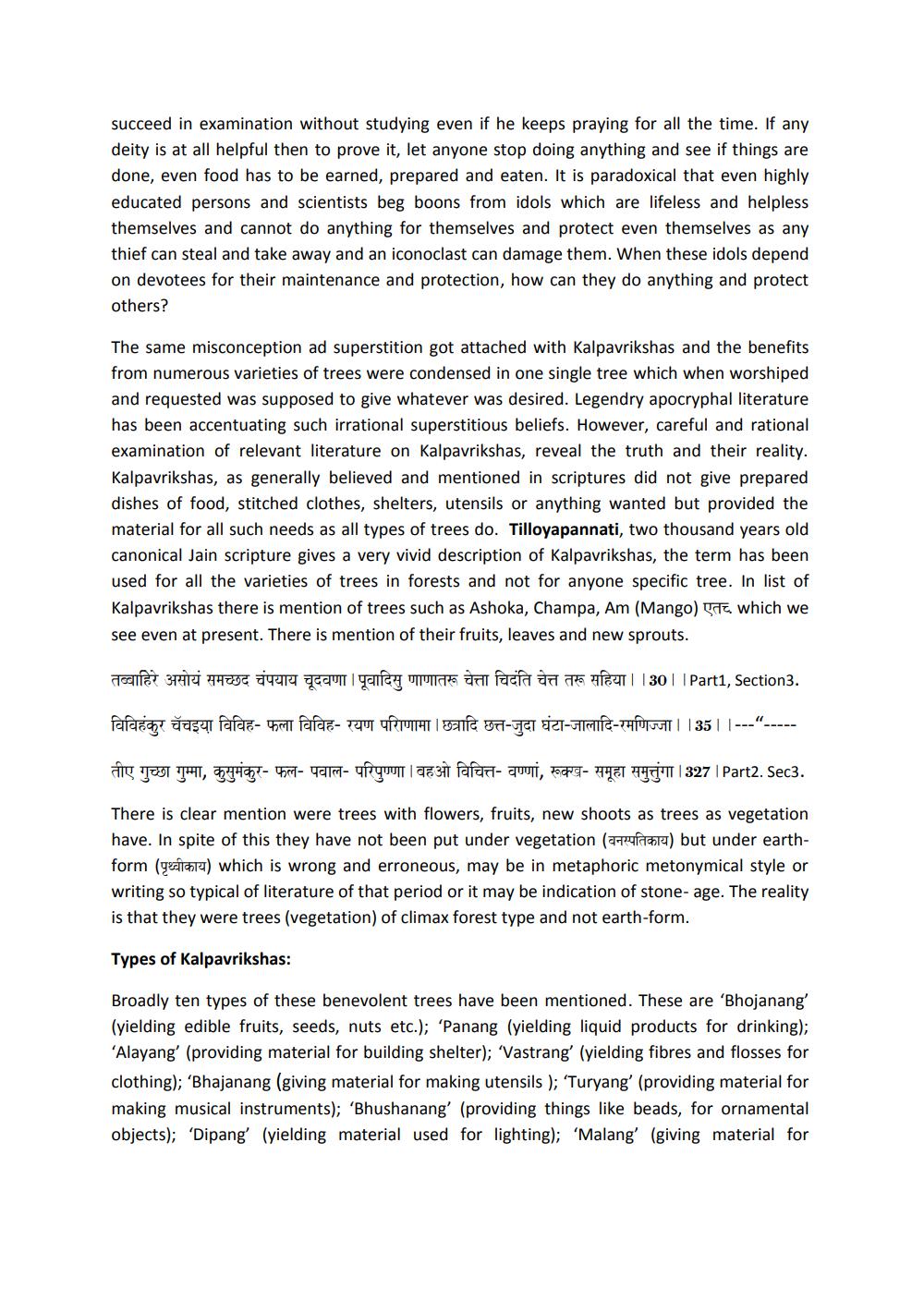Book Title: Kalpavrikshas The Benevolent Trees Author(s): Publisher: ZZZ Unknown View full book textPage 2
________________ succeed in examination without studying even if he keeps praying for all the time. If any deity is at all helpful then to prove it, let anyone stop doing anything and see if things are done, even food has to be earned, prepared and eaten. It is paradoxical that even highly educated persons and scientists beg boons from idols which are lifeless and helpless themselves and cannot do anything for themselves and protect even themselves as any thief can steal and take away and an iconoclast can damage them. When these idols depend on devotees for their maintenance and protection, how can they do anything and protect others? The same misconception ad superstition got attached with Kalpavrikshas and the benefits from numerous varieties of trees were condensed in one single tree which when worshiped and requested was supposed to give whatever was desired. Legendry apocryphal literature has been accentuating such irrational superstitious beliefs. However, careful and rational examination of relevant literature on Kalpavrikshas, reveal the truth and their reality. Kalpavrikshas, as generally believed and mentioned in scriptures did not give prepared dishes of food, stitched clothes, shelters, utensils or anything wanted but provided the material for all such needs as all types of trees do. Tilloyapannati, two thousand years old canonical Jain scripture gives a very vivid description of Kalpavrikshas, the term has been used for all the varieties of trees in forests and not for anyone specific tree. In list of Kalpavrikshas there is mention of trees such as Ashoka, Champa, Am (Mango) She which we see even at present. There is mention of their fruits, leaves and new sprouts. Joe HTC HTC 0944 GUIACH M OTil facia at T HET 130 | Part1, Section3. Para ase fara a falar- TUU URTYTTUA UT-JET 52T-JIMIS-MOUT | 135 |--------- Ang Tag TH, 14-rol- Talia-ufu 3 fafara- qui, 149- HEAT 1401 327 | Part2. Sec3. There is clear mention were trees with flowers, fruits, new shoots as trees as vegetation have. In spite of this they have not been put under vegetation (4 ) but under earthform (geral) which is wrong and erroneous, may be in metaphoric metonymical style or writing so typical of literature of that period or it may be indication of stone- age. The reality is that they were trees (vegetation) of climax forest type and not earth-form. Types of Kalpavrikshas: Broadly ten types of these benevolent trees have been mentioned. These are 'Bhojanang' (yielding edible fruits, seeds, nuts etc.); 'Panang (yielding liquid products for drinking); 'Alayang' (providing material for building shelter); Vastrang' (yielding fibres and flosses for clothing); 'Bhajanang (giving material for making utensils ); 'Turyang' (providing material for making musical instruments); 'Bhushanang' (providing things like beads, for ornamental objects); 'Dipang' (yielding material used for lighting); Malang' (giving material forPage Navigation
1 2 3 4 5 6 7 8 9
